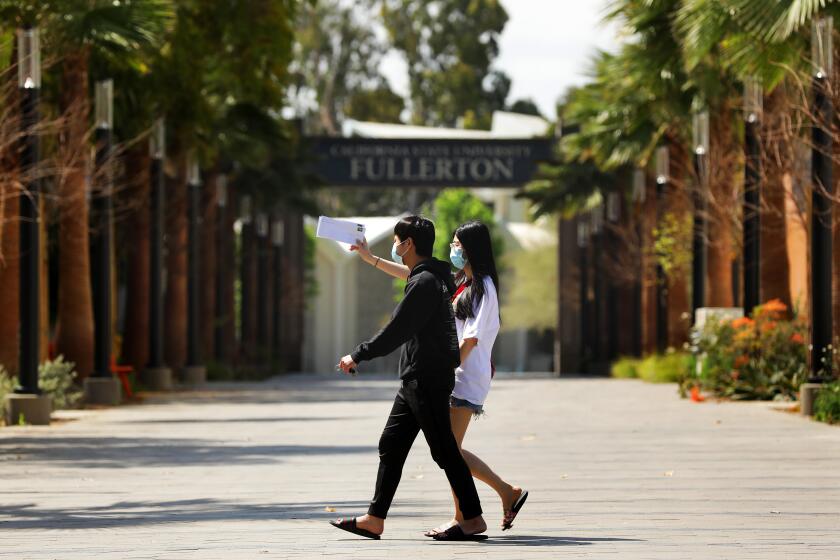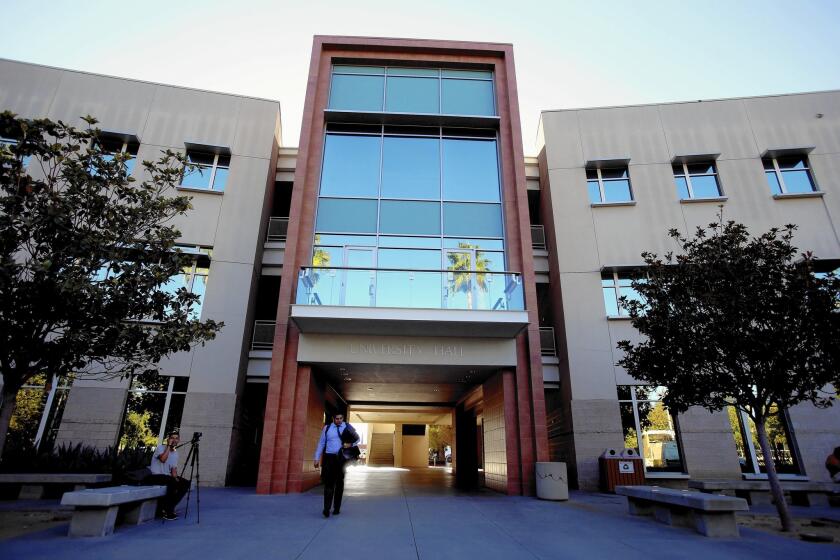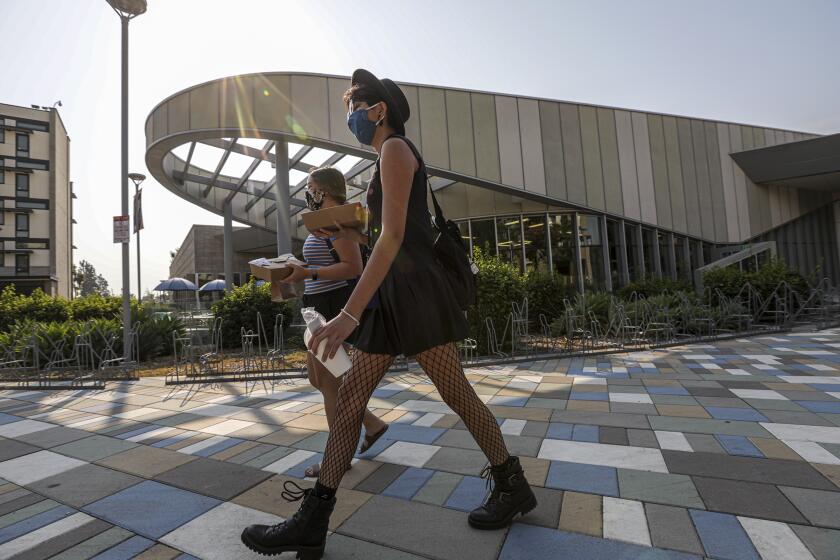Cal State schools see enrollments surge during COVID-19 pandemic
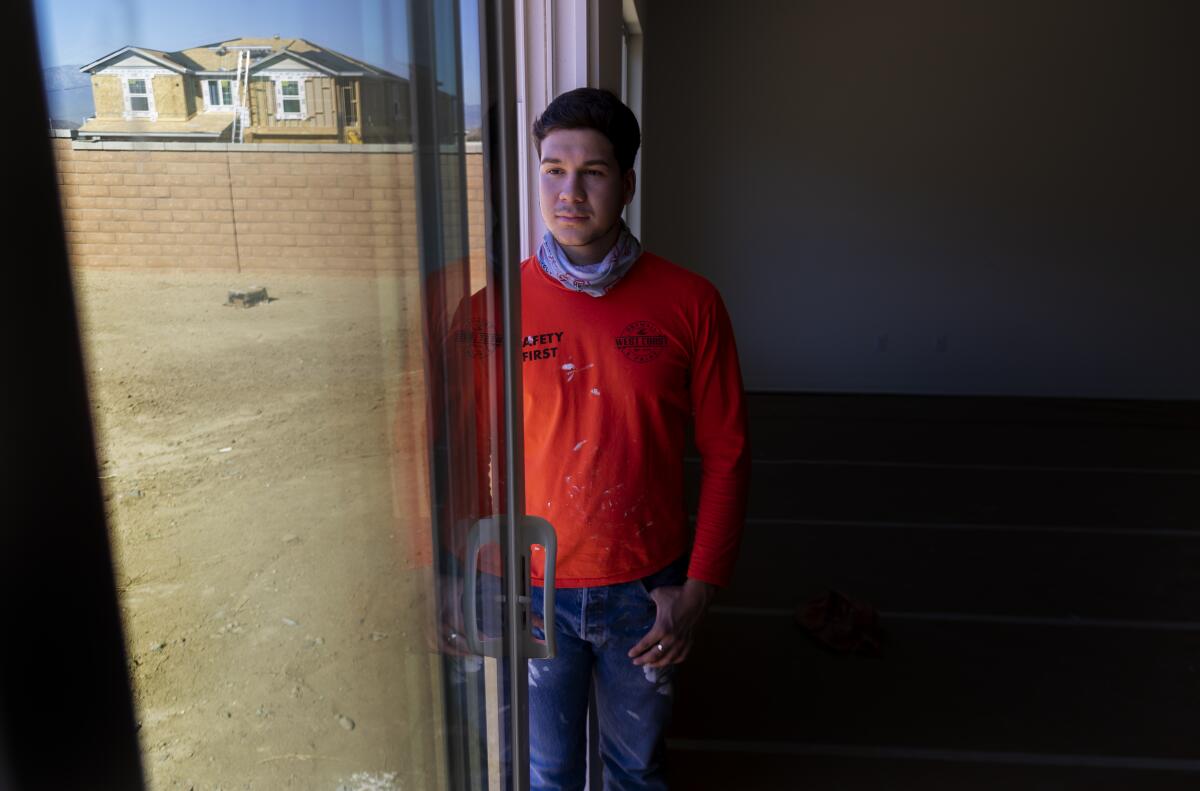
- Share via
Vincent Aguayo wasn’t sure he wanted to attend college. At 18 he was already working in construction, making good money putting up drywall, and he was on a path to becoming a supervisor with health benefits.
But then the pandemic hit, and a lot of the people working the jobs to which Aguayo aspired got laid off. He thought of his cousin, who had earned a degree in construction management from California State University, Chico.
“I started thinking I’d rather go to college,” said Aguayo, who lives in Nuevo, near Riverside. “These people lose a job, and they don’t have a degree — what are they going to do?”
This fall, Aguayo enrolled at California State University, Sacramento, one of thousands of students who pushed the Cal State system to record high enrollment, despite predictions that the pandemic and shift to virtual learning would prompt students to leave in droves. The 23 campuses of the university collectively enrolled 485,549 students in fall 2020, about a 0.75% increase over last fall.
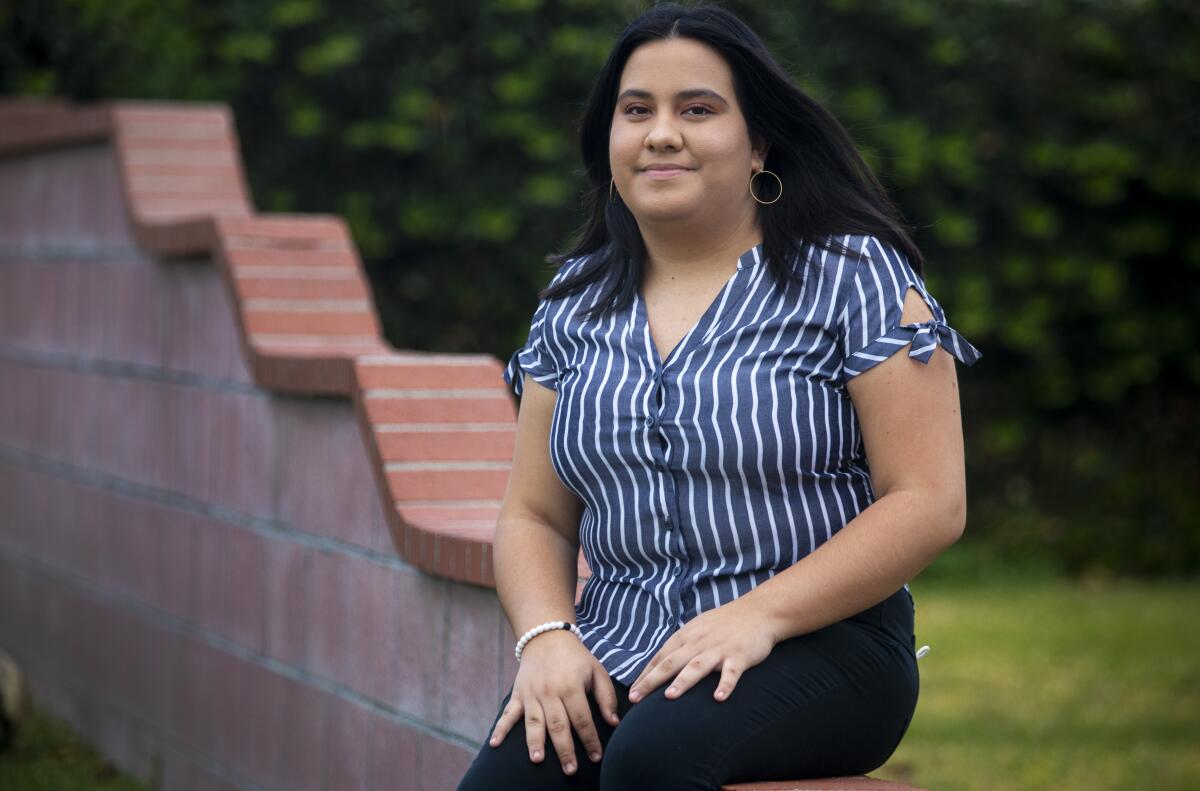
“It’s the opposite of what I was expecting,” said Andrea Venezia, executive director of the Education Insights Center, an education policy research organization based at the Sacramento campus. Venezia, along with many higher education researchers and administrators nationwide, had braced for predicted dramatic drops.
CSU plans to cancel most in-person classes this fall and rely mainly on virtual instruction amid the coronavirus crisis, the chancellor announced Tuesday.
A number of factors likely contributed to the Cal State system’s counterintuitive numbers, university officials and other experts said:
The state universities’ bold decision last spring to decide to keep students online in the fall provided certainty during the early tumultuous months of the pandemic. The university’s years-long initiative to increase graduation rates has built momentum that students did not want to stop. And the relative affordability of the university — and a push for more financial aid during the pandemic — also helped to keep students enrolled.
Nationally, undergraduate enrollment is down by 4% across all sectors, but public four-year institutions such as the Cal States saw the smallest declines, according to preliminary data from the National Student Clearinghouse. Across the country, enrollment among first-time students fell the most precipitously, by 16%, but continuing and transfer students moving from community colleges into universities held steady or ticked up — trends also reflected at the Cal States, where a record share, 85.5%, of first-time freshmen continued on to their second year.
“The enrollment numbers this year clearly reflect the resilience and determination of our students in staying the course to earn a CSU degree,” Chancellor Timothy White said in a statement.
Jocelyn Benavides, 19, grew up in public housing in Boyle Heights and was admitted to Cal State Northridge in 2019 through a program designed to improve access to college for low-income and underserved students. She rented an apartment off campus, joined a sorority and spent most of her waking hours at school, taking a full load of classes, going to the library and gym, stopping by the tutoring center and relaxing at the Oasis Wellness Center.
When the pandemic hit, Benavides moved back home, where she lacked dedicated study space, and lost motivation on Zoom and ready access to her professors and tutors. She thought of dropping out and working full-time, but her older sister, who graduated from CSUN and now works at a nonprofit serving youth in their public housing complex, encouraged her to continue.
“I was already going into my second year, I was thinking I might as well continue and finish,” Benavides said. “If I get my degree and I graduate, I could probably find a job that would not be a minimum wage job or a job that’s hard to find. That motivated me to continue my studies and do something bigger than me so I could help out my community and my family.”
Benavides’ story is not uncommon. “Academic momentum does play a role — we know that from plenty of ‘normal’ situations,” said Michal Kurlaender, education department chair and professor and researcher of education policy at UC Davis.
The 23-campus system awarded nearly 110,000 baccalaureate degrees this spring, an all-time high for the California State University, and continues to make steady progress toward its 2025 graduation goals.
The Cal State system could not yet provide enrollment data disaggregated by race and ethnicity, income or first-generation status. Luoluo Hong, associate vice chancellor for student affairs and enrollment management, said “right now there’s no indication” that students from underserved groups dropped out at higher rates.
However, at the national level this fall, undergraduate enrollment dropped the most among international, Native American and Black students, closely followed by white students. What Kurlaender and others find perhaps most troubling is that in California, enrollment in community colleges — attended by 60% of post-secondary students in public institutions, large shares of whom are low-income, Latino and Black — is down about 8%.
“The pandemic is not hitting communities in the same way,” Kurlaender said.
That drop could have long-term implications for Cal State schools and California’s economy.
“To keep up with the same college enrollment rates and increase the education level of California’s workforce, more and more students should come into the pipeline,” said Mikyung Ryu, director of research publications at the National Student Clearinghouse Research Center.
In addition, if the students who are opting out of the community college pipeline are mostly from disadvantaged backgrounds, “all of the policy or practitioner efforts to narrow the equity gaps ... could be easily wiped out by this lost year,” Ryu said.
Even at the Cal States, the enrollment gains were not evenly distributed — with first-time freshman enrollment down 6% systemwide compared with last year — reflecting effects from the pandemic and recession.
But those losses were more than offset by increases in transfer and continuing students. At many of the Southern California campuses — Dominguez Hills, Fullerton, Long Beach, Northridge, Pomona and San Diego — as well as those in Bakersfield, Fresno and Sacramento, overall enrollment increased, but several Northern California campuses, including San Francisco, Sonoma, Chico and Humboldt, experienced declines.
Geographic disparities in enrollment have long existed, with the growth in California’s college-eligible population centered in the densely urban areas of Southern California, where there are many campuses available for commuting students. In contrast, some Northern California campuses rely on recruitment from outside their regions to bolster enrollments, and the cost of living as well as recurrent wildfires have hurt them in recent years. The COVID-19 pandemic may have exacerbated these disparities, with students opting to stay closer to home.
The nation’s largest public university system, one of the first to decide to go virtual in fall 2020, will continue remotely in January 2021, Chancellor Timothy P. White announced.
The Cal State system’s early decision in May to continue with primarily virtual instruction in the fall at least gave students some certainty with which to make decisions when they got their offers of admission, said Hong.
Andrea Casillas, a second-year student at Cal State Fullerton majoring in communications, said she was upset by the decision at first, but “it helped me plan out what I was going to be doing for the rest of the year.”
“If they would have told us in July or August, it would have been more stressful,” she said.
Casillas, 19, also struggled with remote learning and a lack of engagement with her campus, where she had been involved in the Latino Communications Institute, but she said she was determined to graduate in four years and start her career.
“I’m investing in my future, and all this money that I’m putting into my education is going to be for the better,” she said.
Affordability mattered, too. Annual tuition and fees at the system total $7,360 in the current academic year, versus a nationwide average of $11,839 for comparable universities, according to a Cal State University analysis.
“When you’re dealing with a situation like the pandemic and this long-running economic downturn and students still want to continue their education, the CSU is perfect,” said Jessica Wagoner, senior associate vice president for enrollment management and services at Cal Poly Pomona, which saw a record number of students accept admissions offers and enroll this year.
Cal Poly Pomona also gave out more than $245 million in financial aid, compared with $232 million last year, and had more than 1,200 additional students apply for that aid.
For Aguayo, after enrolling in physics and calculus, he was discouraged by the difficult subjects and learning online.
“My view was if I can’t take physics, I can’t take math, I can’t take college,” he said. “That’s what I was thinking — I had to drop out.”
He found an academic advisor who suggested he take an elective course and his first-year seminar — a sort of “Intro to College” course — instead. Aguayo immediately struck a connection with the teacher.
“That’s probably my favorite class to go to,” he said. Although he’s frustrated by online learning and doesn’t think he can take any of his most difficult courses remotely, he is determined to continue.
“I’ll for sure stick through it now,” he said.
More to Read
Sign up for Essential California
The most important California stories and recommendations in your inbox every morning.
You may occasionally receive promotional content from the Los Angeles Times.
